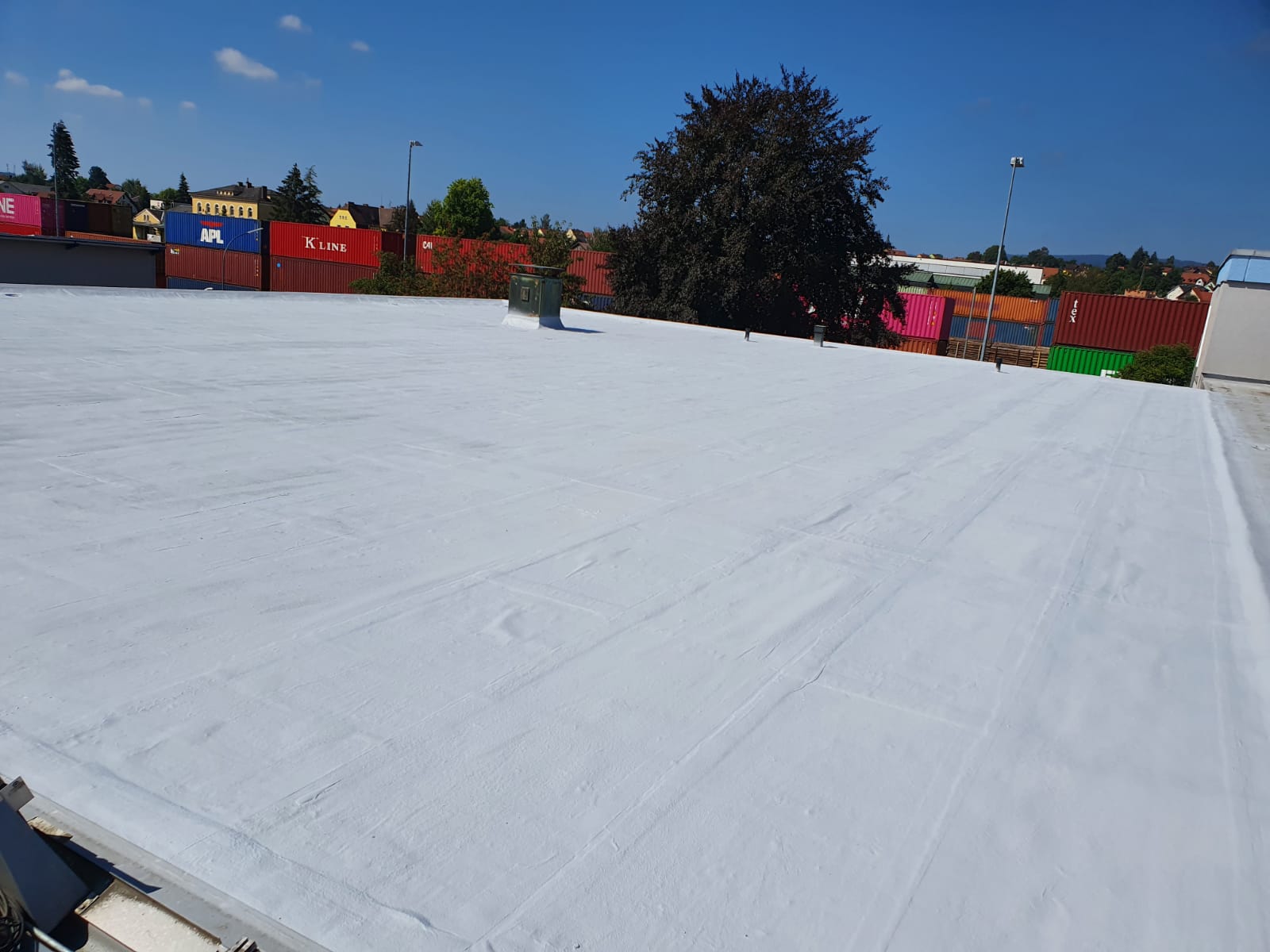Seal the foil roof with liquid plastic and fleece
Seal the foil roof with liquid plastic and fleece without tearing it off
Roof films promise processors and builders the ability to process larger areas in a short time with a smooth and easy-care surface.
Sounds well thought out so far. BUT :
What does it look like in the long term? Is processing really as easy and unproblematic as the manufacturer advertises?
The first hurdle arises at the connections to structures and penetrations.
Here the roof foil must be cut into shaped pieces and then welded or glued again.
Working with a precise fit is extremely difficult here and many weak points arise due to seams on the overlaps and connections.
In addition, end profiles must be attached, screwed and sealed to the wall connections.
When sealing a foil roof with roof foil, the area must also be secured against wind load/wind suction.
This is done either mechanically by doweling to the subsurface, by gluing or by adding gravel.
All requirements for the durability of the roof film.
What makes the roof film even more difficult is the exposure to UV radiation.
The plasticizers in the roofing film gradually diffuse out. The roof film hardens, becomes brittle, cracks and ultimately leaks.
This can be remedied by sealing a flat roof with liquid plastic and fleece.
After thorough cleaning with pressurized water, this can be applied directly to the old roof foil.
Processing is easy due to the system, which means that processing errors are almost impossible.
Once all connections and details have been prepared by hand with liquid plastic and fleece, the rest of the flat roof can be coated with liquid plastic and fleece. Our airless devices are used for this, with which daytime lines of 1,000 m² and more are possible.
This makes flat roof sealing with fleece economical without tearing.
Time savings = cost savings
Flat roof waterproofing with liquid plastic and fleece without tearing off
Relax - decoupling roof foils
If roof foils are exposed to the weather (warm/cold) and especially to UV exposure from sunlight for a long period of time, tensions and strong tensile forces arise on the components.
The roof film stretches like an eardrum. Inlets and fans are often pulled out of position, allowing water to enter unhindered.
In order to return the roof foil to its original position and relax it, the roof foil is decoupled using a separating cut.
The resulting gap is professionally closed and secured with a KSA membrane (cold self-adhesive). Here, a KSA membrane is laid under the resulting gap with the adhesive surface facing upwards and the protective film is removed. At the same time, the two cut edges are pressed firmly onto the adhesive surface. In the second step, another KSA membrane is glued from above over the interface, thus closing the separating cut again.
The flat roof waterproofing is then applied with liquid plastic and fleece.
With this method, even heavily strained foil roofs can be renovated and preserved.
Seal the foil roof with liquid plastic and fleece
Since we explain in detail the processing of flat roof sealing with liquid plastic and fleece on several pages, we will show you a processing video of flat roof sealing with liquid plastic on a foil roof here.











